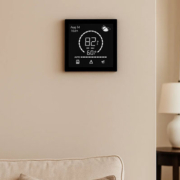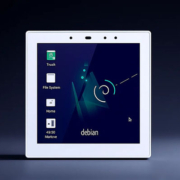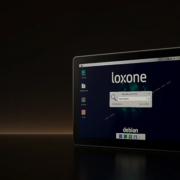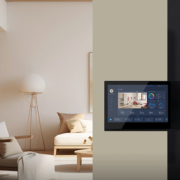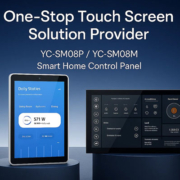What Are the Pros and Cons of Different Smart Home Control Panels?
Choosing the right smart home control panel is a key step in building a reliable, user-friendly automation system. But with so many types on the market—ranging from basic touchscreens to advanced AI-integrated panels—how do you know which one is best for your needs?
In this article, we explore the pros and cons of different types of smart home control panels, helping you make an informed decision whether you’re a homeowner, system integrator, or smart building developer.
1. Basic Touchscreen Panels (Standalone Android/Linux Panels)
These panels are often Android- or Linux-based, with a fixed wall-mount design, offering a centralized interface for managing smart home devices.
Pros:
- Easy to use with familiar smartphone-like interface
- Supports a wide range of apps and third-party integrations
- Ideal for centralized lighting, HVAC, security, and scene control
- Often supports Wi-Fi, PoE, Bluetooth, RS485, GPIO, etc.
- Customizable with OEM/ODM options
❌ Cons:
- Not mobile (fixed in one place)
- Requires initial setup for integrations and app installations
- May need technical support for system-level customization
Portworld’s Android-based panels (e.g., YC-SM10P, YC-SM08P) offer powerful performance with customization for different industries—smart homes, hotels, offices, and more.
2. Voice-Control Panels with Built-in Assistants
Some smart panels now integrate voice assistants like Amazon Alexa or Google Assistant directly into the hardware.
Pros:
- Hands-free control through voice commands
- Great for accessibility or multitasking environments
- Can control scenes, ask questions, and manage schedules
Cons:
- May not be ideal in noisy environments
- Raises privacy concerns for some users
- Limited interface if there’s no display
Voice can supplement touchscreen control, but it’s often better used in combination rather than as a standalone solution.
3. App-Based Smart Home Control (Mobile-Only)
Some users rely entirely on mobile apps to control smart devices without any physical control panel.
Pros:
- Flexible and mobile—you always have your phone with you
- No extra hardware needed
- Push notifications and remote access
Cons:
- Not ideal for shared households
- Requires unlocking phone, navigating to app each time
- Can be inconvenient for guests or less tech-savvy users
📱 While mobile apps are useful, they’re best when used alongside a dedicated wall panel to offer both personal and household-wide access.
4. All-in-One Panels with Integrated Intercom, Security, and Access Control
These are advanced panels designed for multi-function use, especially in buildings, smart apartments, or hotels. They can manage lighting, HVAC, intercom, access control, and security all in one device.
Pros:
- Highly integrated and space-saving
- Useful in commercial or multi-room environments
- Often includes camera, microphone, speaker, and I/O ports
- Central control for multiple systems
Cons:
- Higher cost compared to basic models
- May require professional installation
- Complexity may be overwhelming for some residential users
Portworld’s YC-SM10PM or YC-SM55P offer metal casing, intercom capability, PoE, and RS485—all suitable for secure smart buildings.
5. DIY Smart Panels (e.g., Raspberry Pi, Home Assistant-Based)
For tech-savvy users, DIY panels built using Raspberry Pi or similar hardware allow full customization with open-source platforms.
Pros:
- Fully customizable for tech enthusiasts
- Can integrate unique functions and open-source platforms like Home Assistant
- Cost-effective in hardware (if self-built)
Cons:
- Steep learning curve
- No official technical support
- May not be reliable for mission-critical use (e.g., access control)
Great for hobbyists or prototyping—but for commercial use or professional smart homes, ready-to-deploy solutions like Portworld’s industrial-grade panels are more stable and scalable.
Comparison Summary
| Type | Pros | Cons | Best For |
|---|---|---|---|
| Basic Android/Linux Panels | Centralized, customizable, intuitive interface | Fixed location, setup required | Homes, offices, smart hotels |
| Voice-Control Panels | Hands-free, accessible | Privacy, noise issues, limited on-screen interaction | Kitchens, accessibility spaces |
| Mobile App Only | Portable, no extra hardware | Not shared-friendly, less convenient | Basic users, renters |
| All-in-One Integrated Panels | Multi-function, sleek, secure | Higher cost, complexity | Smart buildings, hotels |
| DIY Custom Panels | Affordable, open-source friendly | Complex to build, less stable | Tech enthusiasts, prototyping |
Each type of smart home control panel has its strengths and weaknesses. The right solution depends on your project scale, user needs, environment, and integration requirements.
If you’re looking for a balance of performance, customization, and stability, professionally developed Android-based smart panels—like those from Portworld—offer a strong foundation for both residential and commercial applications.
Portworld offers OEM/ODM smart control panels with full software + hardware customization, multi-protocol support (Zigbee, KNX, Modbus, Matter), and scalable solutions for smart homes, hotels, and smart buildings.

